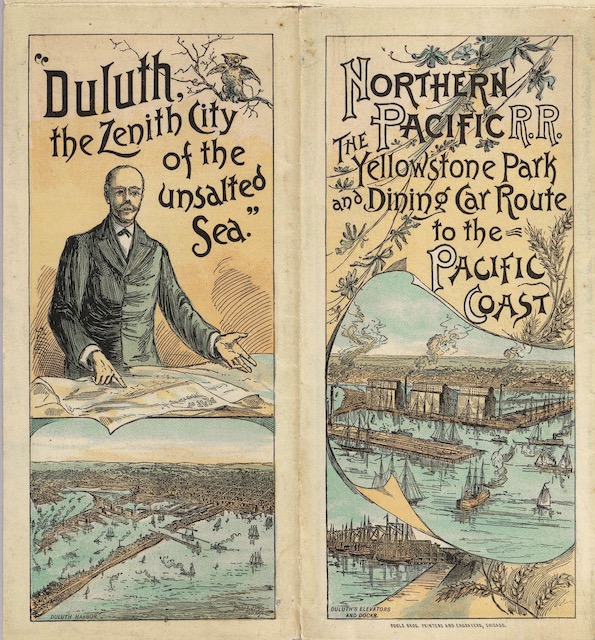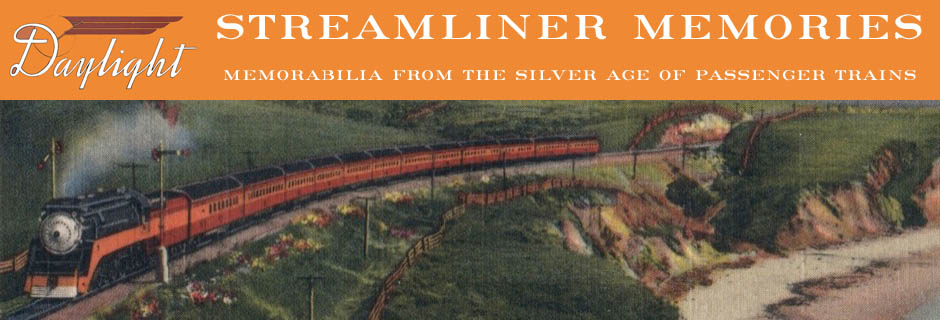In 1871, Kentucky Congressman J. Proctor Knott gave a humorous speech on the floor of the House of Representatives ridiculing the idea of giving land grants to western railroads. He focused on Duluth, which at the time had about 3,000 residents, and his basic argument was that U.S. taxpayers in general should not be required to subsidize projects that benefitted only a few.
 Click image to download a 16.1-MB PDF of this timetable, which is from the David Rumsey map collection.
Click image to download a 16.1-MB PDF of this timetable, which is from the David Rumsey map collection.
The speech was widely reprinted by those skeptical of government pork barrel (a term that first became popular about the time Knott gave his speech). Sixteen years later, Northern Pacific, which received what was probably the largest land grant to a private company in American history, reprinted the speech in this brochure.
This might seem strange except that NP annotated the speech with recent facts in bright red letters, such as that Duluth had grown to house 26,000 people by 1886, that more wheat was delivered to Duluth each year than to any other American city, and that it also saw deliveries of millions of board feet of lumber and hundreds of thousands of tons of iron ore each year.
NP didn’t say so in so many words, but its point was clearly that the land grants, contrary to Knott’s predictions, were a good thing for most if not all Americans. However, the brochure also didn’t mention that James J. Hill was proving that a railroad that didn’t receive any land grants or subsidies could provide just as many benefits without going bankrupt, which would leave both investors and taxpayers in the lurch. (The St. Paul & Pacific did receive a small land grant, but Hill paid fair market value for that railroad and land after it went bankrupt, thus Hill didn’t particularly benefit from the subsidy.)
The back of the brochure shows a map of the Northern Pacific from Duluth and St. Paul to Portland and Tacoma. A comparison with the NP’s 1879 map of the projected route of the railroad reveals several differences. The 1879 plan called for the railroad to go via Butte, but instead it went through Helena, conceding the market for moving Butte mineral ores to the Union Pacific.
The 1879 plan also aimed at building a new rail line on the north bank of the Columbia River to Portland, but instead NP relied on the Oregon Railway & Navigation Company (which was controlled by Henry Villard when Villard got control of the NP). This proved unfortunate because NP later lost control of the Oregon railroad to the Union Pacific. This forced Hill, who by 1905 had control of NP, to build the Spokane, Portland & Seattle Railway on the north bank of the Columbia to give both GN and NP access to Portland from the east.
